Black Country Ring (plus a bit):
Autherley Junction to Stourbridge
6 and 7 June 2009
This year's June canal holiday took us from Autherley
Junction on the edge of Wolverhampton, largely around the Black Country
Ring, but extended to take in the Stourbridge Canal.
Our holiday began
with an interesting manoeuvre, reversing through the stop lock at
Autherley Junction and out onto the Staffordshire and Worcestershire
Canal which we took south. The Staffs & Worcs was one of the earliest
English canals, authorised in 1766 and completed in 1771.
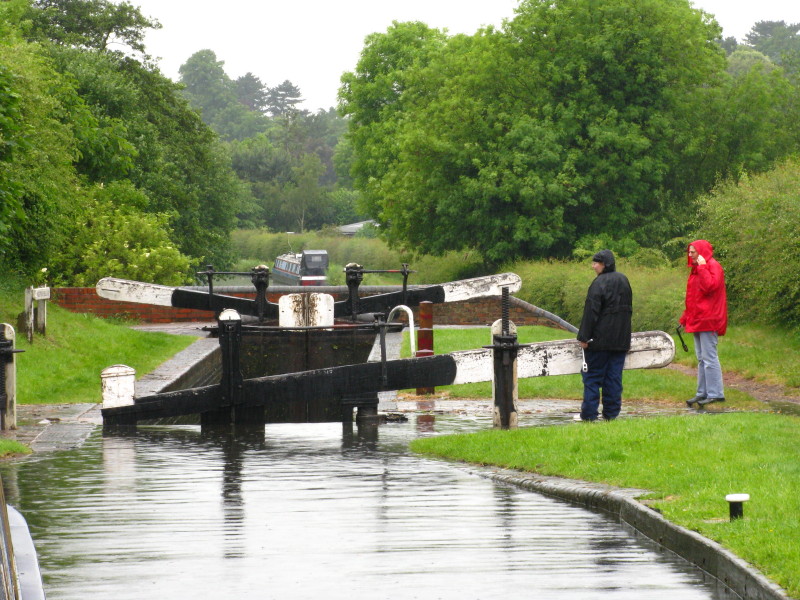
It rained all the way on our journey up the motorway, and it is still
raining as we descend from the summit level of the Staffs & Worcs Canal:
at Wightwick Mill Lock, the water is overflowing the top gates and the
lockside around the balance beam and ground paddle.
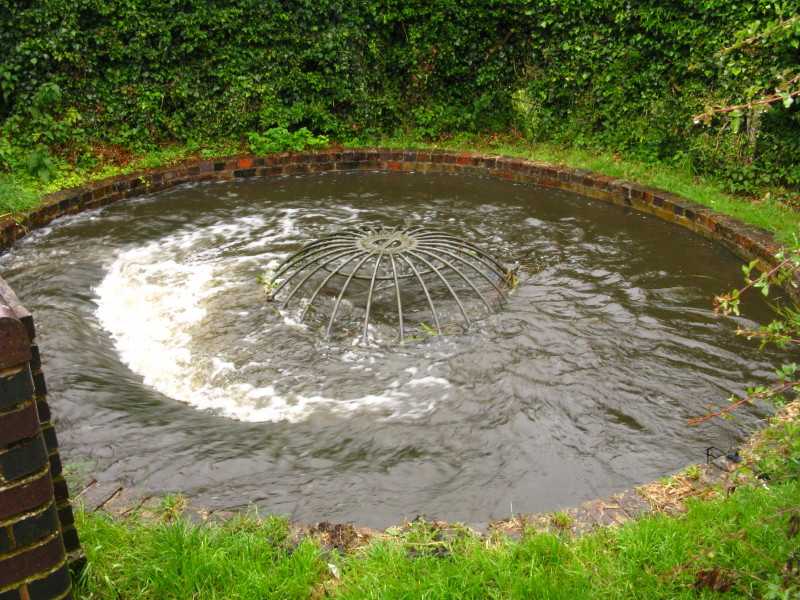
The Staffs & Worcs has some unusual circular overflow weirs - this one
is clearly struggling to cope with the volume of water.
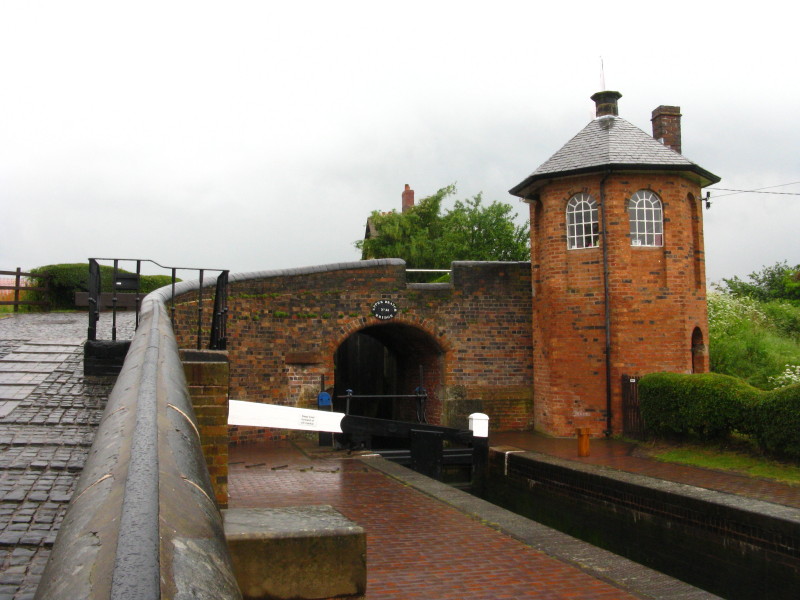
Next morning, and despite a largely dry night, it is raining again. We
moored just above the Bratch locks, and here we are descending them. The
three locks were originally a staircase, but were later rebuilt as three
separate locks to reduce water usage, but with only a few feet between
the bottom gates of one and the top gate of the other, there is no room
to pass another boat.
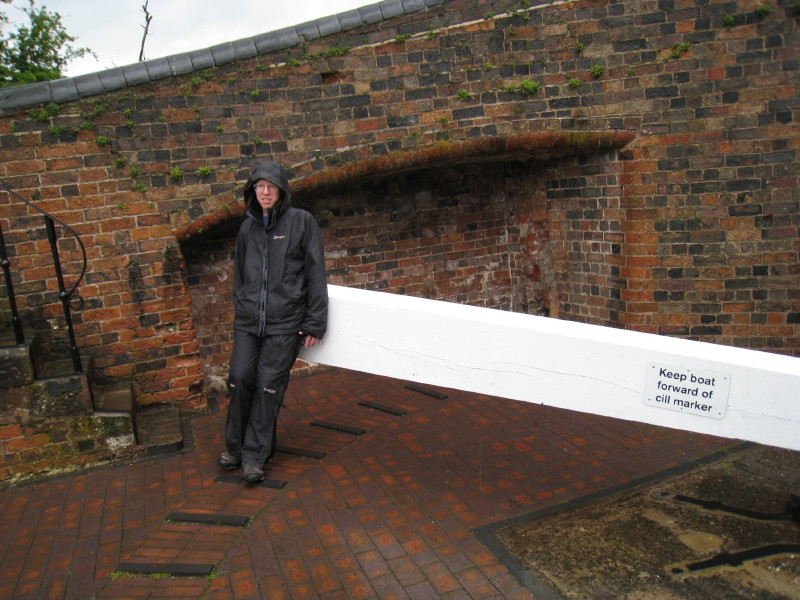
Stephen closes the top gate of the middle lock
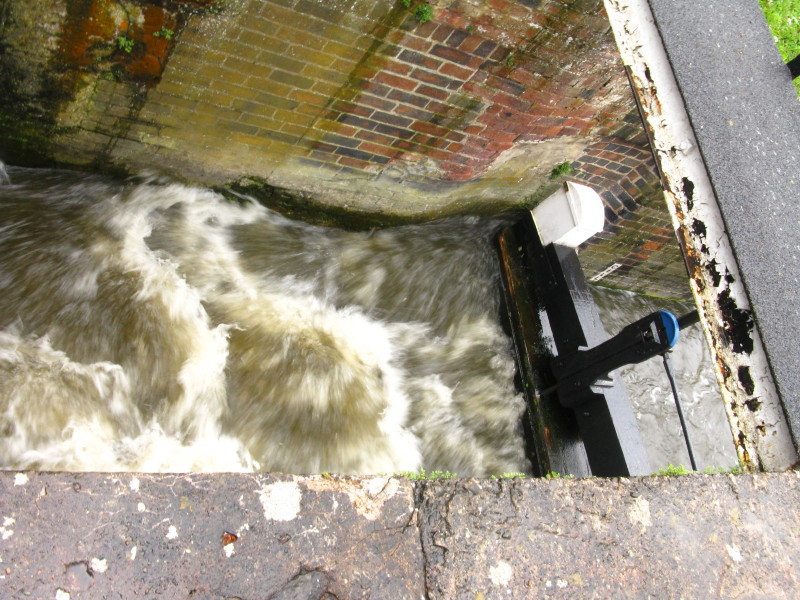
Water surges from the middle lock against the top gate of the bottom
lock
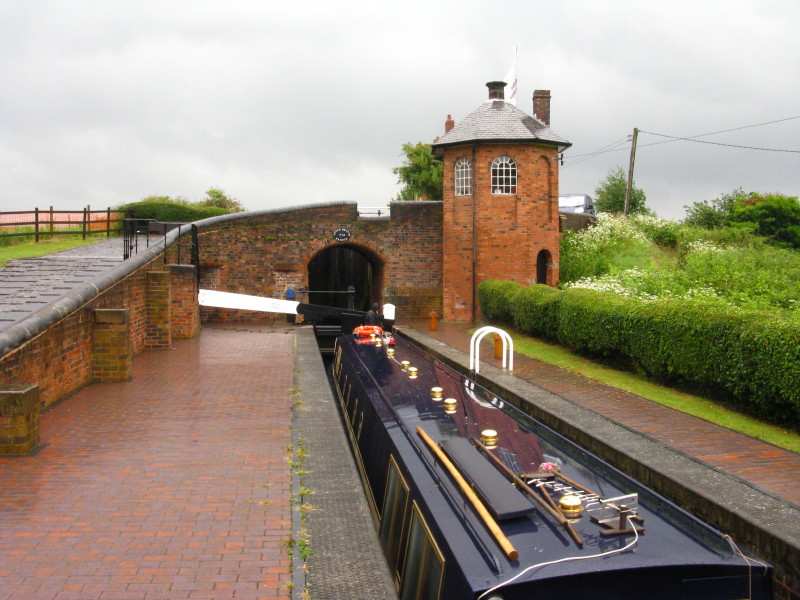
Lucy at the tiller as the boat descends the middle lock
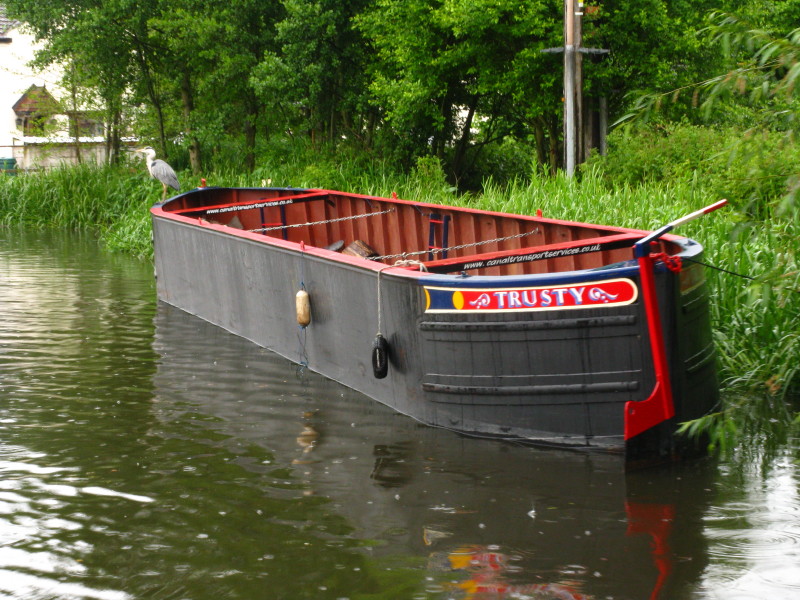
A heron perches on Trusty, advertising Canal Transport Services
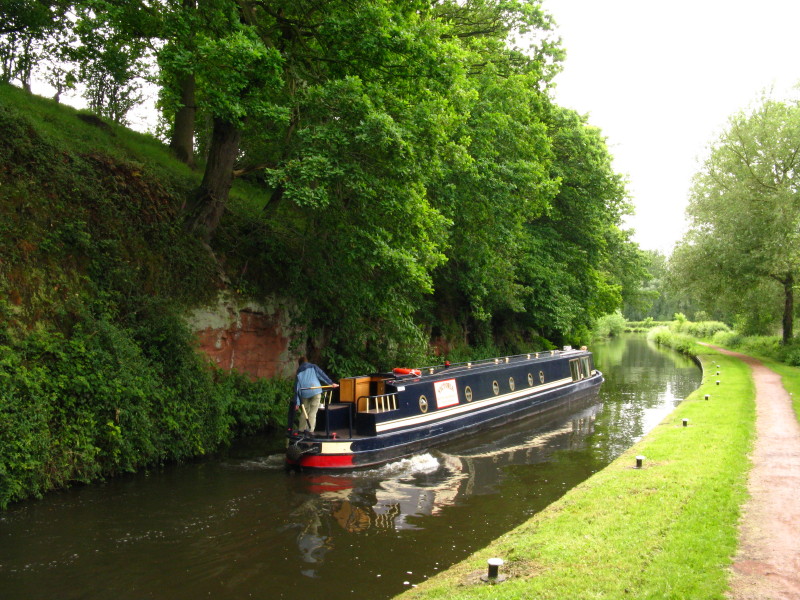
Mary steers Victoria past an outcrop of red sandstone as the
canal clings to the edge of the valley of Smestow Brook
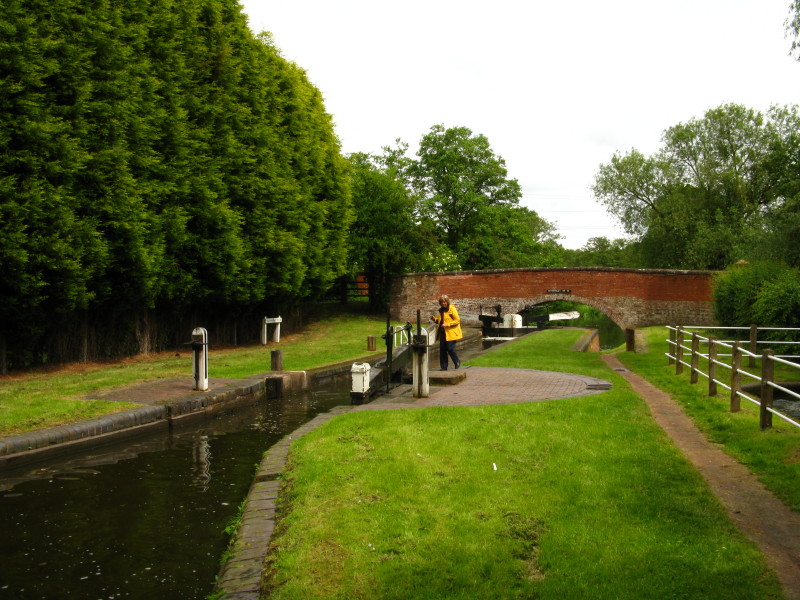
Merry at work preparing Gothersley Lock as we wait for Victoria
which is taking a long time reaching us from Rocky Lock - we later
learned that the boat had gone aground in the middle of the canal
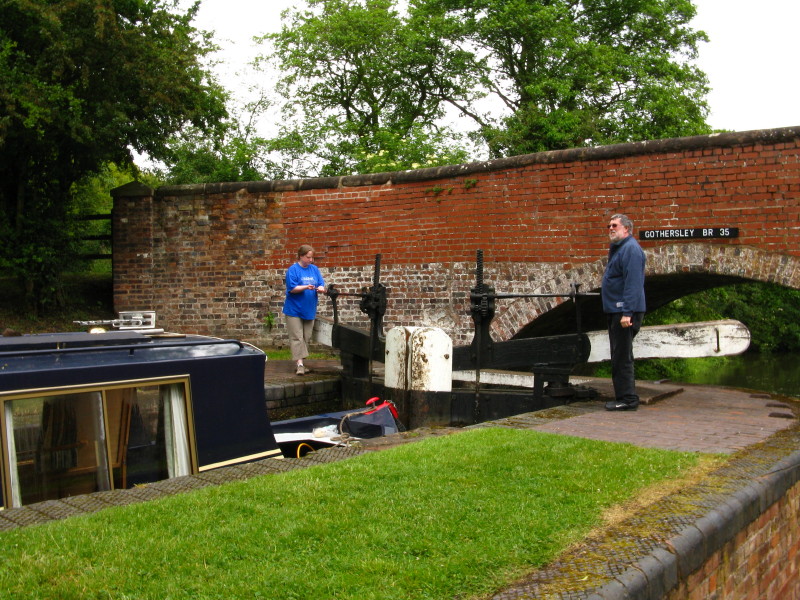
Helen and Alan watch the boat descend
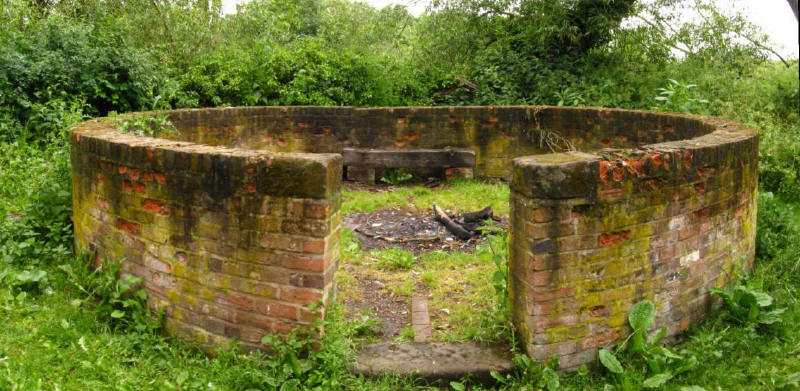
On Friday we will visit Gailey Roundhouse - this is its less well known
pair, both originally being canal company buildings from 1805, this one
being on the site of a wharf serving an ironworks.
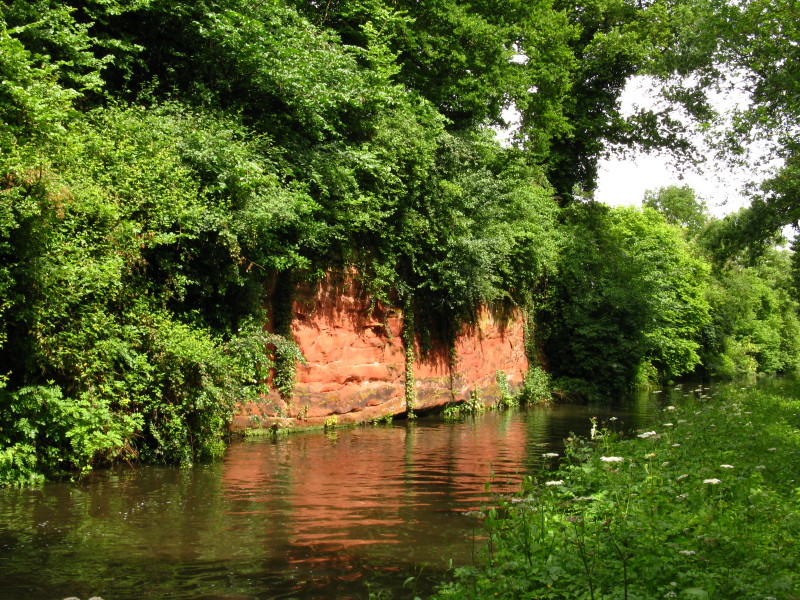
Another sandstone wall blasted to create room for the canal.
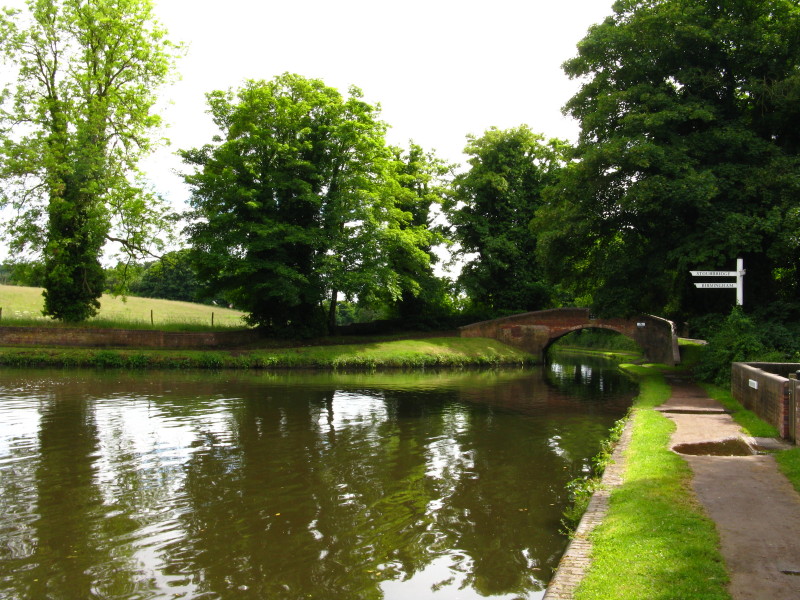
At Stourton Junction, we turn left off the Staffs & Worcs Canal onto the
Stourbridge Canal. The canal was authorised in 1776; engineered by
Thomas Dadford, the canal was largely complete by 1779.
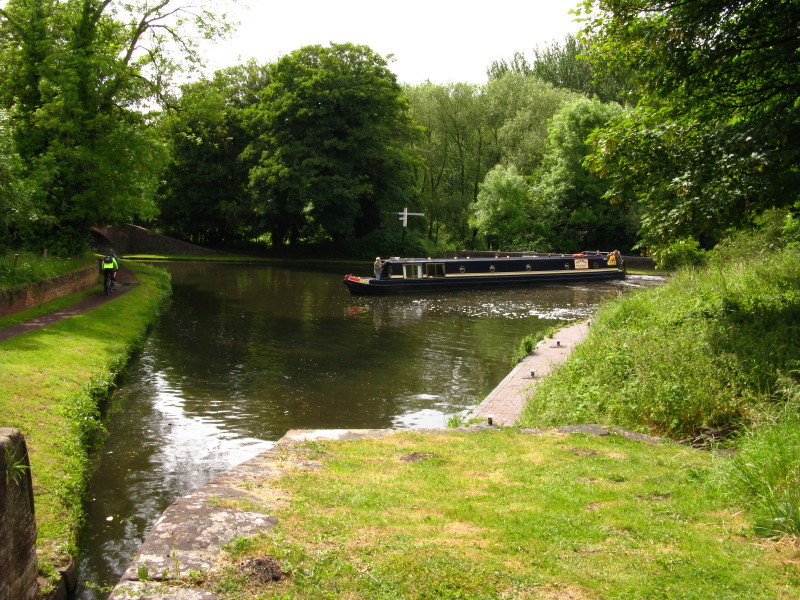
Lucy steers Victoria around the junction.
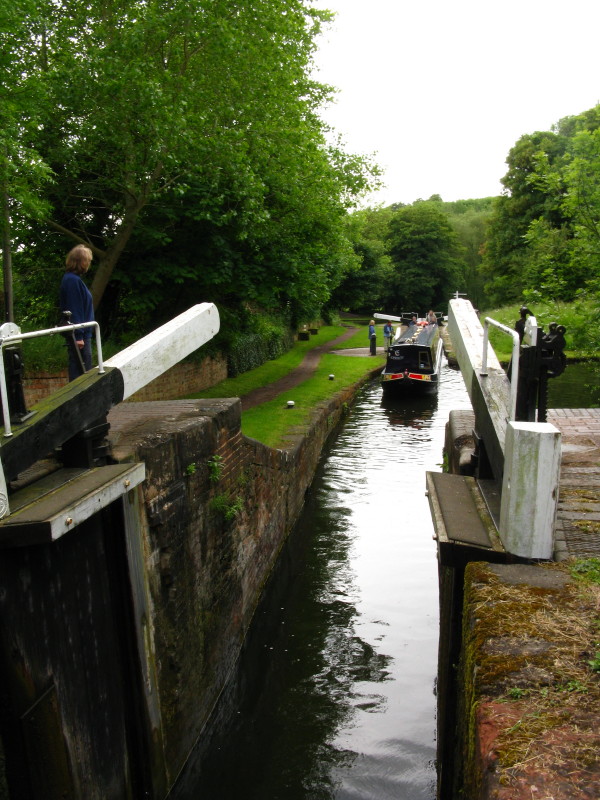
There are four Stourton Locks: Victoria moves from the first into
the second watched by Merry
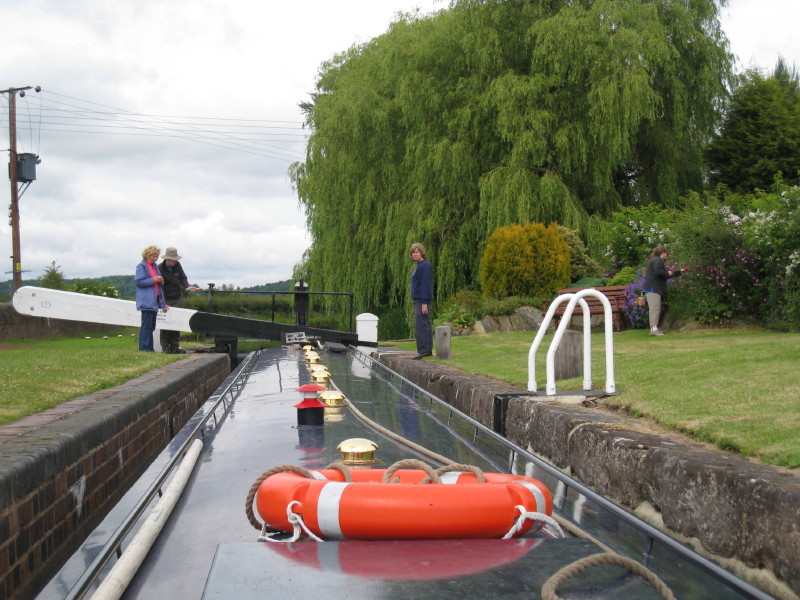
The top lock. The top two have been adopted by local residents - indeed,
almost incorporated into their gardens - and are very attractive. Jane,
Stephen and Merry watch the boat rise while Helen collects flowers for
the table.
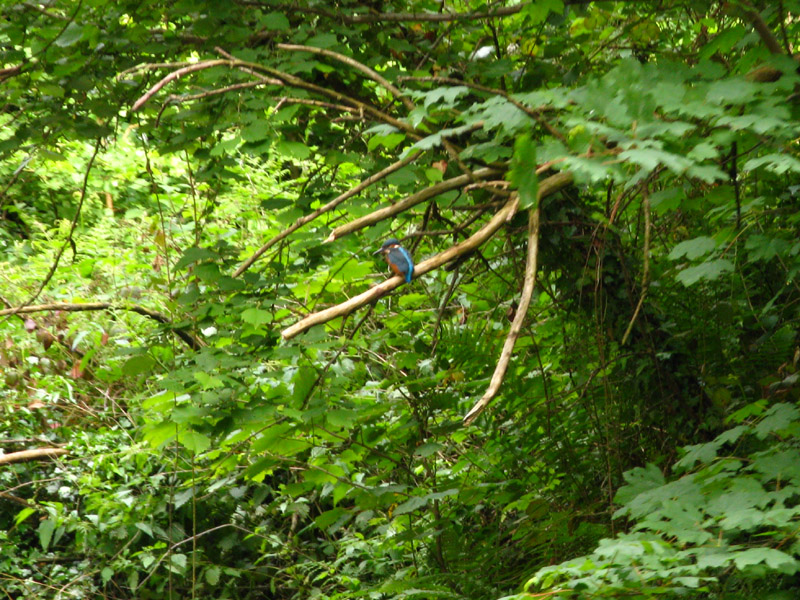
We chased kingfishers along the Stourbridge Canal, but they were
difficult to photograph as they kept disappearing in a flash of blue.
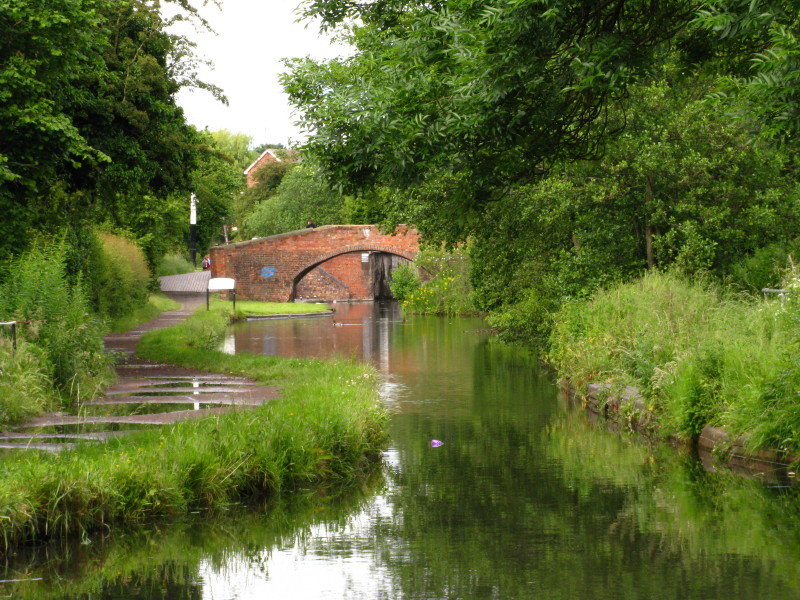
Approaching Wordsley Junction (under the bridge), we first cross the
Stour Aqueduct
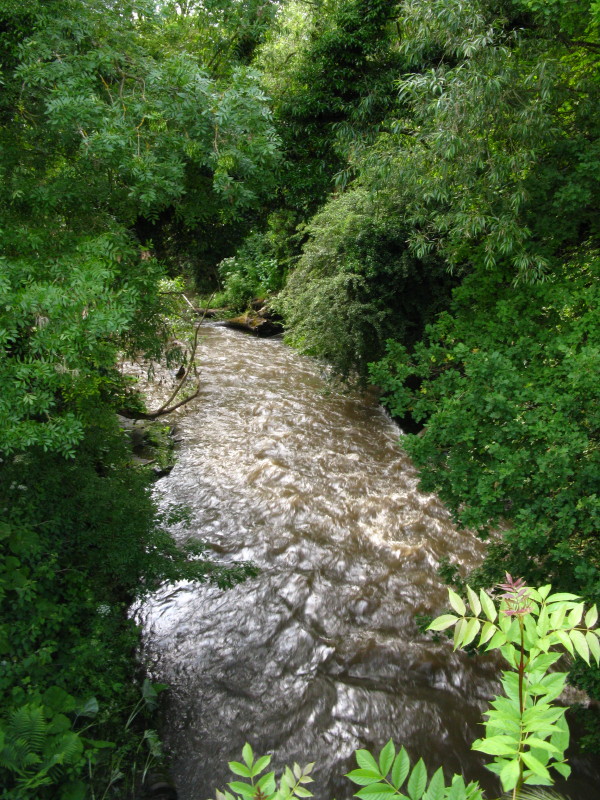
Looking down on the River Stour as we cross it for the second time this
afternoon.
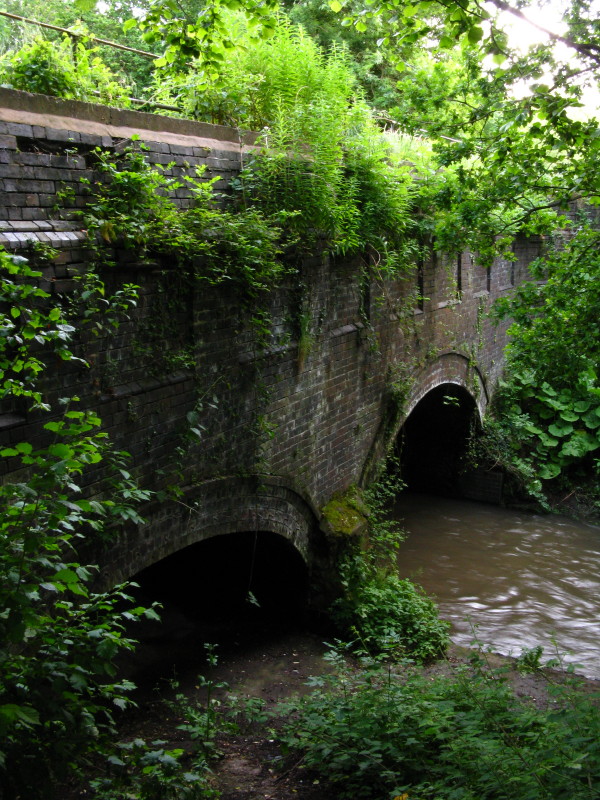
The Stour Aqueduct
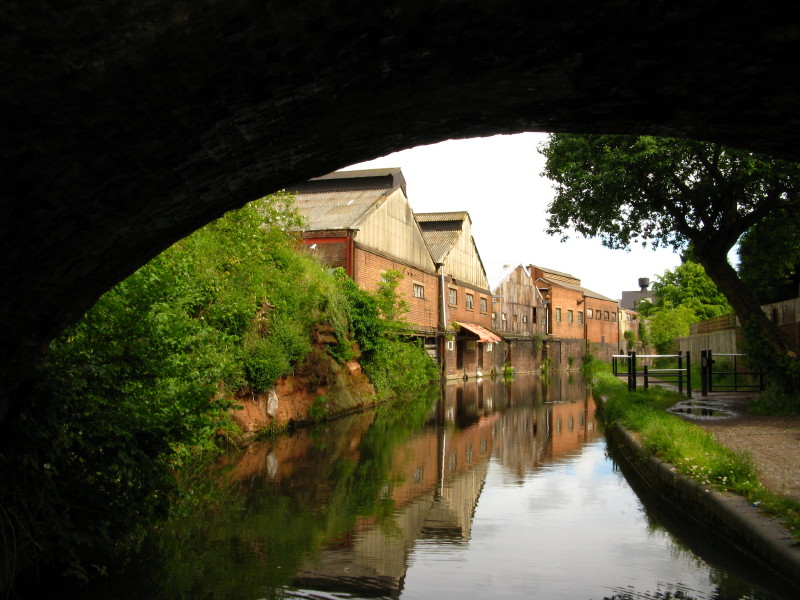
We then turned off at Wordsley Junction to travel along the Stourbridge
Town Arm. The industry that once relied on the canal now turns its back
on it, but noises suggested that productive activities continue despite
the run-down nature of the buildings.
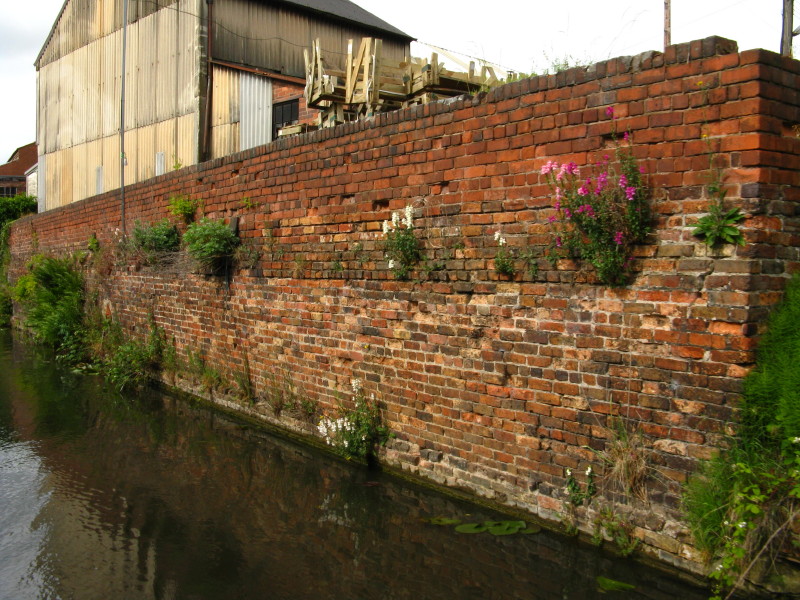
Flowers growing out of a wall
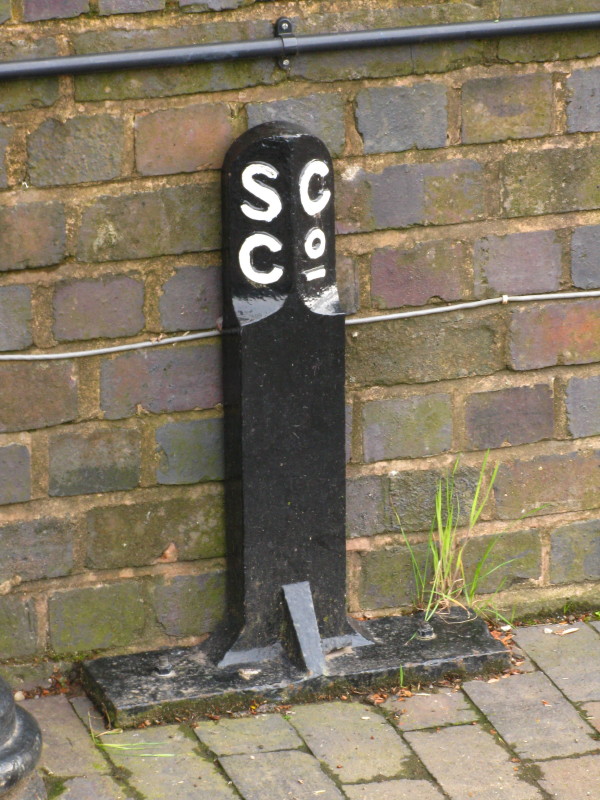
At the terminal basin, a Stourbridge Canal Company post
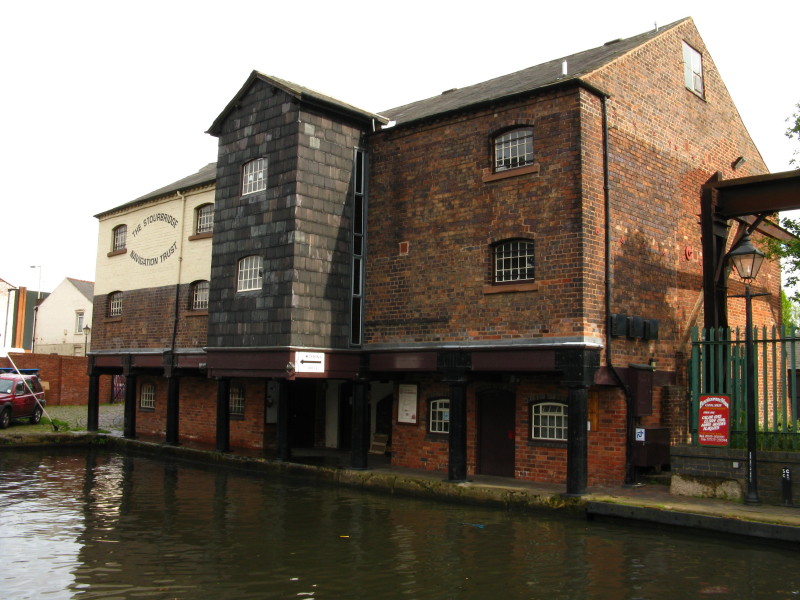
The headquarters of the Stourbridge Navigation Trust at the terminus of
the Arm - it once continued a little further to a railway interchange
basin.
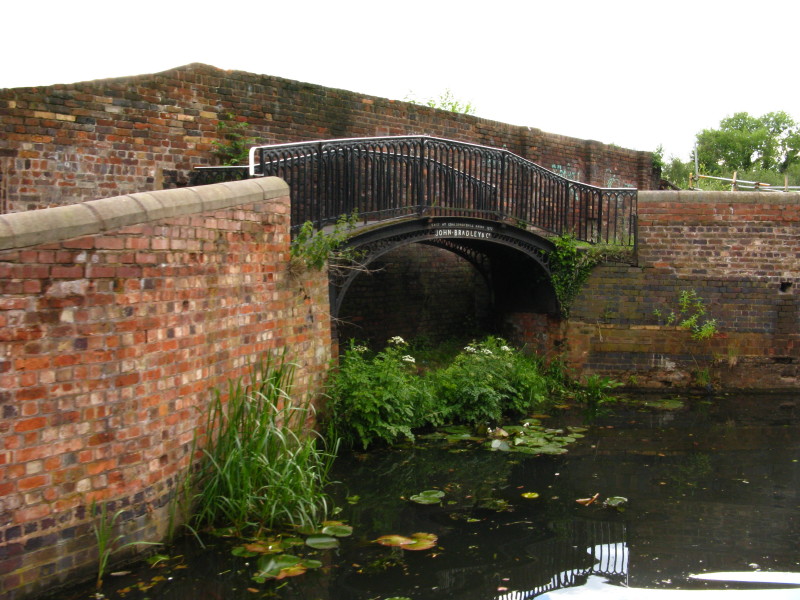
After filling with water, we return along the Arm, passing a bridge
dating from 1873 bearing the name "John Bradley". He founded the
ironworks here in 1798 - among many other things, it produced the first
steam locomotive to operate in the USA, named Stourbridge Lion,
which puffed its way through Pennsylvania in 1829.
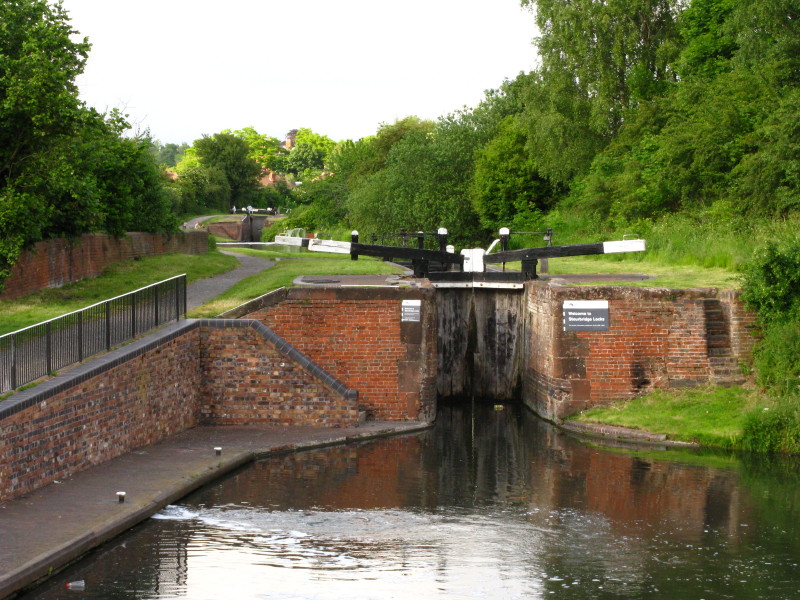
Safely moored at the junction, a look at the first two locks of the
Stourbridge Sixteen that await us in the morning.
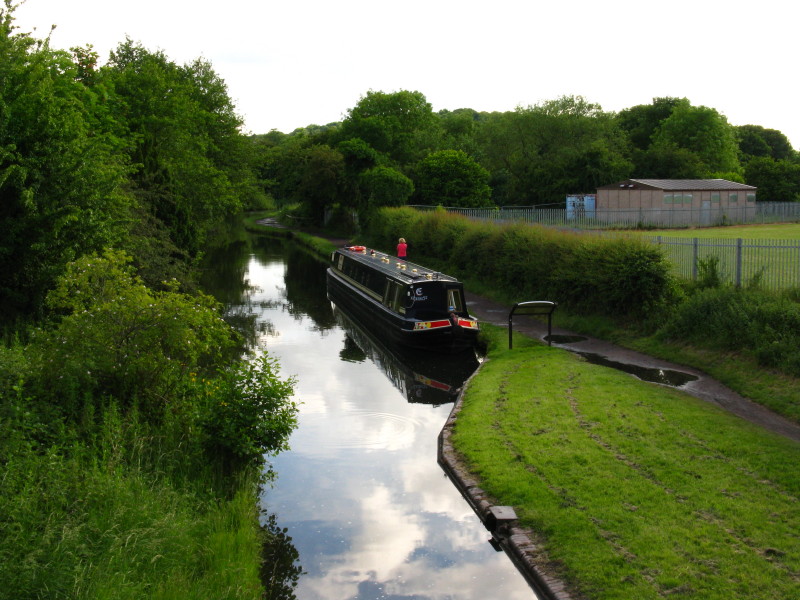
Victoria moored between Wordsley Junction Bridge and the Stour
Aqueduct.
Total over the one-and-a-bit days: 17 miles, 7½ furlongs including 23
locks.
|